The SHOWCASE project focuses on integrating biodiversity into everyday farming to understand its practical value. It explores how payments, advice and policy measures can support on-farm biodiversity, and tests ways to implement biodiversity-friendly farming.
The main approach was to set up a network of farmers, advisors, local people and researchers at 11 ‘Experimental Biodiversity Areas‘ (EBAs) across 10 European countries (sometimes building on existing national projects or initiatives focused on farmland biodiversity). The goal was to build local groups, called communities of practice, where people could work together to test and improve new ideas for boosting biodiversity whilst strengthening farm productivity.
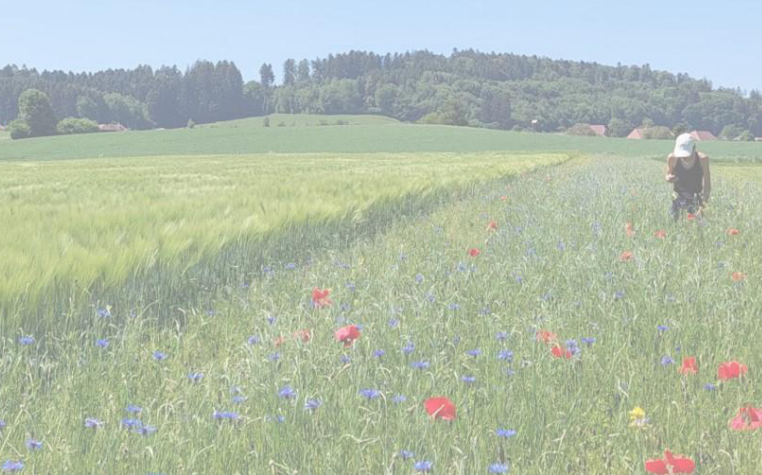
Swiss EBA
The Swiss case study examines the effects of agroecological practices compared to conventional farming in Swiss agricultural fields as part of the SHOWCASE project. We monitored biodiversity, crop yields, and agronomic inputs to understand the trade-offs between biodiversity enhancement and yield. Agroecological fields (wheat, barley and oilseed rape), employing wildflower strips, minimal pesticide use, and mechanical weeding, showed significantly higher biodiversity, particularly in spiders and bees. However, yields in these fields were generally lower than in conventional fields, which maintained higher outputs due to chemical inputs. While agroecological practices clearly benefit biodiversity, they present challenges in maintaining competitive crop yields, emphasising the need for targeted farmer support.
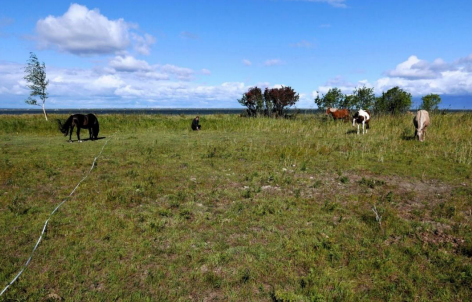
Estonian EBA
The Estonian Experimental Biodiversity Area (EBA) included coastal grasslands created through traditional agricultural activity. However, due to changing socio-economic conditions, the management of many of these habitats has been abandoned. In the Estonian EBA we studied the effects of grazing and abandonment on the soil-dwelling arthropods (invertebrates with cuticles and segmented bodies) in these grasslands. We found some previously unrecorded species of macro- and micro-arthropods in grazed areas, and showed that in general, grazing enhanced arthropod abundance. However, coastal wooded and abandoned habitats supported more specialist species, and other types of soil-dwelling arthropods. We conclude that both abandoned and wooded habitats should be preserved to support arthropod and wider biodiversity in the Estonian coastal landscapes.
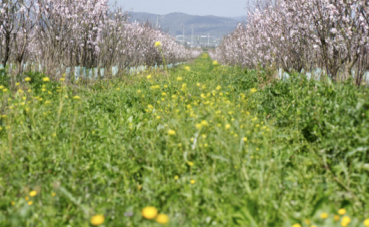
Spanish EBA
The Spanish EBA worked with stone fruit farmers in a high-intensity agricultural area to find ways to improve biodiversity without reducing crop yields. We tested the use of sowing flower cover between the trees. The flower cover helped increase the number of plants, pollinators, spiders and other beneficial insect like predators and parasitoid wasps (wasps which can sometimes kill pests by laying eggs in, or on the pest as a ‘host’ for the young to feed on). The farmers did not lose fruit production. In fact, many of them liked the sown cover so much that they kept them after our experiment was over.
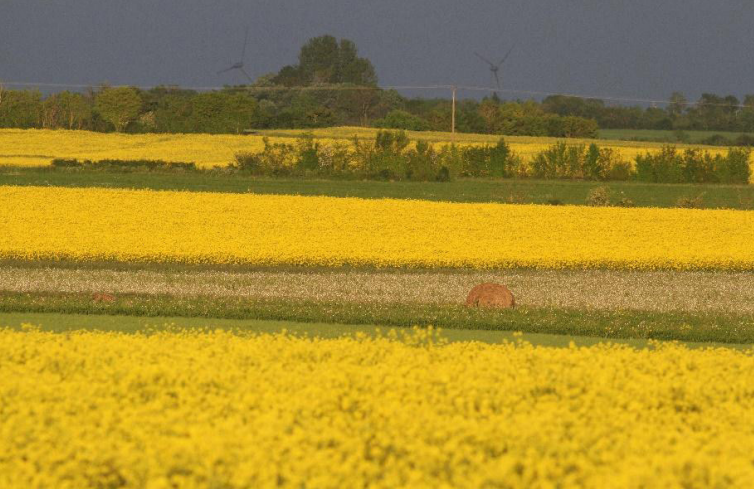
French EBA
A series of experiments were carried out 2022-2023 with 19 farmers and 58 cereal fields in the French EBA, some of which were conventional and some of which were organic. Experiments targeted: (i) the reduction of pesticides and/or synthetic nitrogen by 30-50% for conventional farmers, and (ii) mechanical weeding and soil work, typically by avoiding deep ploughing, for organic farmers. Biodiversity (arable flowers, spiders, carabid beetles, and bees), crop yields, farming practices, and gross margins were all assessed, and analysed to test whether a win-win situation between biodiversity and yield and/ or gross margin could be achieved. We found that overall, yields were not significantly penalised by reductions of inputs (magnitude of effect was around 5% decrease), but this depended on the year of experiment and the intensity of the farming practices. Consequently, overall gross margins were either stable or significantly increased, depending on year and in particular, the balance between crop prices and inputs prices (that varied largely between 2022 and 2023).
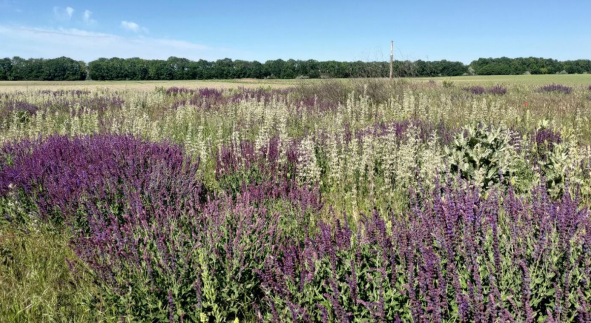
Hungarian EBA
Farmland biodiversity is rapidly declining, including pollinators such as wild bees, and pest control providers, such as spiders and birds. The goal of the Hungarian EBA was to restore populations of these ecosystem service providers. We teamed up with 10 Hungarian farmers, to assess the effectiveness of pollinator-friendly agricultural practices, using two experiments: (1) we overseeded fallows with locally native wildflowers, and (2) established 0.5 ha wildflower fields and strips next to crops. Both experiments had positive results, with the abundance of pollinators, including wild bees, hoverflies and butterflies, increasing with the experimental treatments compared to control areas. The overseeded fallows yielded more hay, and soil quality improved, while the yield of crops did not change next to the wildflower fields. The wildflower fields were especially important in late summer, when homogeneous arable landscapes do not provide any other flower resources for pollinators. We found that these wildflower patches also provided wider biodiversity benefits, for example by attracting farmlands birds and game species (e.g., hares and deer) which use them as feeding and resting sites.

Dutch EBA
Reduction in management intensity of grassland management is one of the most widely implemented agri-environmental measures to restore farmland biodiversity. Higher biodiversity can support ecosystem services that are beneficial to farmers, such as higher grassland productivity. Schemes to reduce management intensity that successfully increase biodiversity may therefore be more cost-effective to farmers than schemes that do not. In the Geuldal area, in the Netherlands, we investigated to what extent biodiversity can compensate for yield losses associated with less intensive management. We examined biodiversity, various ecosystem services, yield and farmer income in 41 grasslands with a range of management intensities, from zero to heavy fertilisation. Farming less intensively effectively enhanced biodiversity and most of the measured ecosystem services, which produced significant benefits to society. However, only cover of legumes, such as clover, contributed to yield. Farming less intensively resulted in a loss of income for farmers that was not compensated by enhanced provision of ecosystem services. This highlights the importance of financial incentives to stimulate farming for biodiversity.
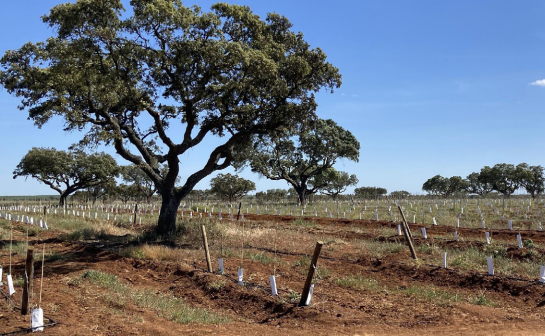
Portugal EBA
Over the last 30 years, olive farming has experienced a rapid and large-scale intensification process across its Mediterranean historical range, with significant negative impacts on biodiversity. In the Portuguese EBA ‘EBAlentejo’, we investigated the effect of inter-row vegetation cover in a range of experimental sites on three biodiversity groups: bees, spiders and wild plants. Each site included two distinct areas, an intervention area in which inter-row herbaceous vegetation was sown, and a control area where no herbaceous vegetation was sown in the inter-row. We found that inter-row vegetation (a kind of wildflower strip) cover significantly impacted all three biodiversity groups. Specifically, the increased diversity and biomass of plants in the experimental treatment led to a higher richness and abundance of bees, spiders and plants. Our findings therefore suggest that managing inter-row vegetation cover can be crucial for helping biodiversity conservation in olive farms, including intensively managed farms.
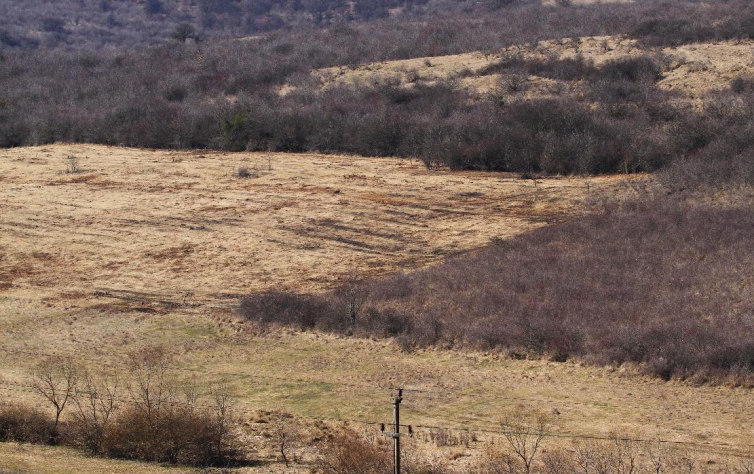
Romanian EBA
The natural-cultural landscape of Transylvania hosts European hotspots of plant and insect biodiversity. The species-rich meadows are the result of millennia of traditional land use in harmony with nature. To support biodiversity in these grasslands, a key land management practice is the removal of shrubs for which farmers receive financial compensation from the Romanian government. In 2022 and 2023 the Romanian EBA (Experimental Biodiversity Area) monitored the butterfly biodiversity in both recently cleared patches and uncleared patches of grassland. The results showed that biodiversity increased after the shrubs were removed. Moreover, biodiversity continues to increase in the following years if the grasslands are continually managed.
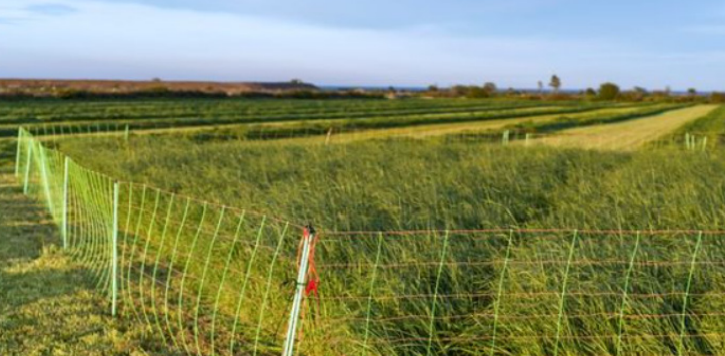
Swedish EBA
Over centuries, landscapes have evolved under the pressure of human land use. While change is an inevitable part of our existence, each transformation brings the challenge of balancing agricultural productivity with biodiversity conservation. As species continue to decline across farmlands, the urgency to protect biodiversity, essential for both agricultural resilience and overall ecological health, intensifies. Through SHOWCASE, we have searched for interventions where farmers, who face many commitments and challenges around growing food, can be assisted in addressing biodiversity interests and concerns. These interventions are diverse in approach and how farmers connect to them, but typically they are concerned with monitoring or conservation action. Here, we present some examples, illustrating three forms of farmer involvement.
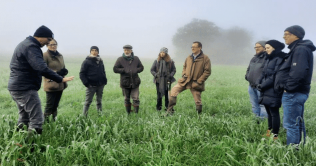
British EBA
Cover crops are planted to cover and protect the soil when it is not being used by other crops. They can provide a range of environmental and production benefits, but their impact depends on which species are planted. Here, we compared three winter cover crop mixes and a control where no cover crops were planted. We found significant benefits to biodiversity as a result of cover cropping, with 26% more spiders and 53% more earthworms in the cover cropped plots over winter. Earthworm abundance and biomass (weight/area) also increased in the subsequent spring crop by 66% and 60% respectively. Earthworms promote soil health and spiders are important for pest control, both of which can increase crop yield and farm profits. These results are hugely promising as this study was conducted over one year, and the benefits of cover cropping will likely increase if practiced over several years. These results strongly support the environmental benefits of winter cover cropping in the UK. We also showed the value of including farmers when setting research questions and designing experiments, as our research question was co-designed with 16 farmers. This made our results directly relevant to our farming community, and several participants changed their practices as a result of our findings.